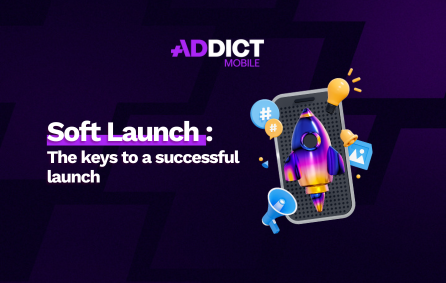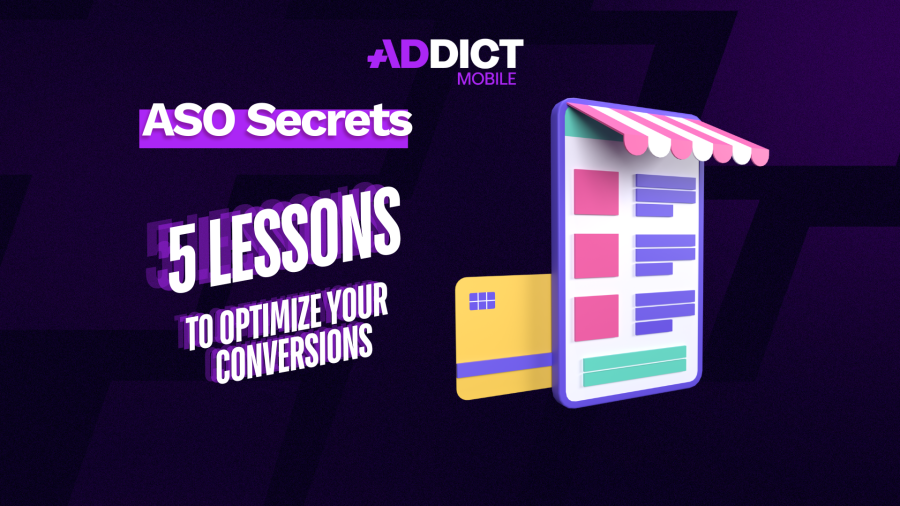📈 8 Key Strategies to Boost User Engagement on Your App
Introduction
User engagement is a key indicator of the success of a mobile app. The more users interact with the app, the more likely they are to become loyal and perform high-value actions such as in-app purchases. Understanding and optimizing user engagement is therefore essential to maximizing retention and app profitability.
What Is User Engagement?
User engagement refers to the level of interaction and involvement a user has with a mobile app. It can be reflected through various behaviors such as:
- Time spent on the app: The more time a user spends on the app, the more engaged they are.
- Session frequency: A user who opens the app several times a day is more engaged than an occasional user.
- Number of actions performed: Adding a product to the cart, liking content, watching a video, completing a profile—all of these are engagement indicators.
- Social interactions: Shares on social media, friend invites, comments.
- Conversions and in-app purchases: An engaged user is more likely to make transactions.

How Is User Engagement Measured?
There are several KPIs used to evaluate engagement:
Retention Rate
Measures the proportion of users who return to the app after a specific period (1 day, 7 days, 30 days). A high retention rate indicates that the app continues to interest users after their first session.
Average session duration
Indicates how long a user spends on the app per session. Longer durations signal stronger interest and engagement.
Session frequency
The number of times a user opens the app. Apps with high session frequency (e.g., messaging apps, mobile games) have high engagement levels.
Number of actions performed
Monitoring actions per session (clicks, shares, cart additions, content interactions) shows how users engage with the app.
Conversion and in-app purchase rates
Engaged users are more likely to make in-app purchases, subscribe to premium services, or click on ads.
Why Is User Engagement Critical in App Marketing?
User engagement directly impacts the profitability and sustainability of a mobile app:
- Improve retention: Engaged users continue using the app, reducing churn.
- Increase monetization: Active users are more likely to buy products, subscribe, or interact with ads.
- Promote word-of-mouth: Satisfied users naturally recommend the app to others.
- Improve acquisition ROI: The longer a user stays active, the better the return on acquisition investment.
- Collect more useful data: High engagement provides insights into user expectations, enabling app improvements.

Do not hesitate to contact with our teams
Addict can support you to improve your performance.
What Strategies Can Increase User Engagement?
Encourage Engagement From the First Interactions
The first three days after installation are critical. Users who don’t see immediate value may uninstall the app. Here are some best practices to ensure new users are convinced:
- Effective onboarding: Interactive guides, tutorials, welcome messages to explain features.
- Rewarding first actions: Incentives and encouragement to promote user interaction.
- Seamless experience: Fast loading times and frictionless user journeys.
Enhance User Experience
The user experience (UX) must be optimized to ensure smooth and enjoyable navigation:
- Ease of use: A clear and intuitive interface improves engagement.
- Attractive and ergonomic design: Pleasant colors, typography, and animations.
- Performance and speed: A slow app discourages users.
- Accessibility: Compatibility with various screens and devices.
Use Push Notifications
Push notifications are a powerful way to bring users back to the app:
- Personalized notifications: Based on preferences and behaviors.
- Contextual messages: Limited-time offers, reminders, content suggestions.
- Avoid spam: Too many irrelevant notifications may lead to uninstalls.
Gamification
Gamification makes the experience more engaging:
- Points and reward systems: Encourage actions with rewards.
- Challenges and leaderboards: Competition with other users stimulates engagement.
- Badges and trophies: Motivate users to reach new goals.
- Example: Duolingo uses intense gamification strategies with daily streaks, learning goals, and leaderboards.
Omnichannel Marketing Experience
Engagement is reinforced through presence on multiple channels:
- Email: Follow-ups, newsletters, exclusive offers.
- Social media: Engaged community, contests, live interactions.
- SMS: Short, impactful messages for reminders or promotions.
- Mobile apps using in-app messaging see retention rates increase by 61%-74% after Day 28 (Source : Upland)
Implement Loyalty Programs
Rewarding loyal users increases long-term engagement:
- Point systems: Earn points to unlock benefits.
- VIP statuses: Access to exclusive features.
- Personalized offers: Discounts and perks based on user behavior.
Run Regular Testing
Testing key app elements helps optimize experience and engagement:
- A/B Testing: Compare versions of interfaces or messages.
- Behavioral analysis: Understand user navigation patterns.
- Continuous improvement: Adjust based on feedback and data.
Evolve the App With New Features
Regular updates keep the app fresh and interesting:
- Add new features: Spotify, for instance, frequently introduces new functionalities to improve user experience (Daylist, Discover Weekly, Jam).
- Enhance existing features: Make changes based on feedback.
- Innovate with trends: Integrate popular features to match market expectations.
Best Practices to Foster User Engagement
Run a soft launch
A phased rollout in a test region helps identify potential issues before a global launch.

To go further, discover our best practices for a successful soft launch!
Open the app to beta testing
Engaged user groups provide valuable feedback to optimize the experience.
App Store Optimization
Good visibility on app stores attracts qualified users and increases engagement (Know more about ASO here)

Boost your conversions with our 5 lessons to ensure your performance with ASO!
Conclusion
User engagement is a crucial lever for mobile app success. A strategy centered on user experience, interactivity, and personalization maximizes retention and user value. By combining optimized UX, gamification, omnichannel marketing, and regular testing, it’s possible to significantly enhance user engagement and app profitability.


